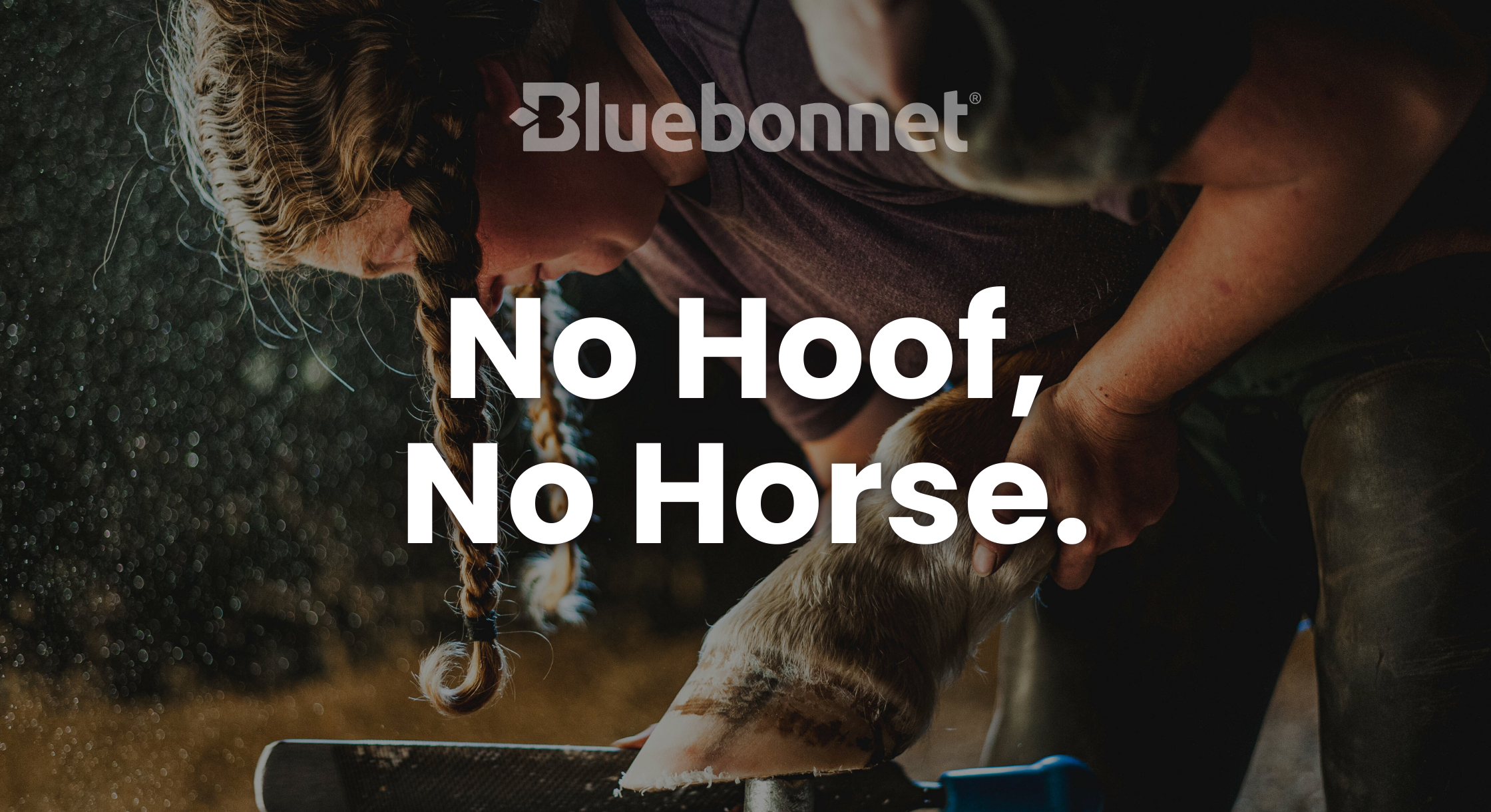
Ever heard the saying “No Hoof, No Horse”? Maybe you have dealt with foot problems in your own horse. It’s not a fun situation, and many times it can feel like nothing you try is working. A myriad of components influence the health of your horse’s feet, and there is no such thing as a magic cure all. Here are some things to consider if you find your horse in need of a foot health overhaul.
Nutrient Utilization
Not all nutrients are created equal and some are more effective at improving hoof quality than others. Biotin, copper, zinc, lysine, and methionine are among the most influential when it comes to supporting quality growth. (All of these components can be found in Pro Balance and Hoof + Hair).
Biotin - Researchers have found that adding mega doses of biotin to the diet will improve hoof quality. This can be accomplished through the addition of a supplement, feed or combination. High quality feeds may provide between 2-10 mg of biotin daily, but research shows that increasing to 15 to 25 mg each day can significantly improve hoof quality. Further clinical studies have found that feeding 100 mg biotin per day provides even more impressive results when it comes to hoof quality. This may be one vitamin where more really is better!
Copper & Zinc – These two trace minerals play a pivotal role in hoof quality, and they are often overlooked. Hoof horn contains some of the highest concentrations of zinc within the body, and providing a quality form of zinc in the proper amount can directly impact hoof health. Research suggests organic forms of copper and zinc (such as ‘copper lysine complex’ and ‘zinc methionine complex’) can significantly improve sole depth and hoof quality. Few people realize copper and zinc use the same absorption channel, so they compete with one another to get into the body. Having too much zinc in the diet actually reduces the amount of copper that can be absorbed. It’s important to provide zinc and copper in proper ratios to one another. The National Research Council recommends 4 parts zinc to every 1 part copper in the total diet to ensure proper absorption of both minerals.
Lysine & Methionine – These two essential amino acids are major building blocks of proteins, which link together to form structural components of the foot. Methionine is unique because it is needed to produce cystine, which is a major component in keratin. The hoof wall is made up primarily of keratin, which is a protein found in hair, horn, and nails. The body cannot make it’s own lysine or methionine, so they must be consumed in the diet on a daily basis.
Nutrient Supply
Adequate blood supply is critical for normal hoof growth and quality. Blood is responsible for carrying vital nutrients to the structural components within the foot such as bones, joints, tendons, laminae, sole, and hoof wall. Certain disease processes can alter blood flow to the foot. Since the hoof wall is a rigid, solid structure, it lacks the ability to expand a large amount. If trauma or a disease process causes swelling within the foot, that swelling will compete for room and overpower the ability for blood to continue to circulate appropriately. The moment blood flow is restricted to the foot it becomes a serious issue because tissue and bone can begin to die. Veterinarians will often prescribe supplements containing nitric oxide technology (such as Surge® by Bluebonnet), to support normal blood flow and circulation in horses dealing with laminitis, founder, Cushing’s, or insulin resistance. For horses with the aforementioned diseases, nitric oxide technology supplements are often used in conjunction with other medications and a low starch, low sugar diet and restricted access to green grass.
Environment & Hoof Mechanics
Cold weather temperatures can be blamed for slow hoof growth, and researchers have also found that high body temperatures (heat stress) can have the same result. Water is one of the biggest enemies of the foot. Horses that stand in mud or water are more likely to develop thrush, abscesses, thin soles, flaky hooves, and flaring of the hoof wall. Don’t forget that daily bathing, especially if the baths are long can contribute to some of these conditions.
Timely trimming and maintaining proper angles is one of the biggest responsibilities you and your farrier have for ensuring proper hoof mechanics. Allowing too much time to pass between trimming or shoeing creates a perfect storm for a number of ailments within the foot. Long toes, under run heels, and negative plantar angles can cause undue stress on tendons and ligaments. Allowing excessive toe growth or flares can compromise the hoof wall and lead to chips and cracks.
Genetics
Nutrition and management play a huge role in hoof quality, but they can only maximize a horse’s genetic potential. Hoof quality or lack of, can be passed from generation to generation. This is why a barn full of horses on the exact same diet and management protocols may vary when it comes to foot quality.
If you suspect your horse may be in need of a specialized nutrition program to address hoof health, or if you just want a nutrition consultant to review your horse’s current diet, Bluebonnet Feeds offers free virtual nutrition consults.

